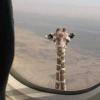
Sign in to follow this
Followers
0

Does anyone navigate using dead reckoning?
By
LHookins, in MS FSX | FSX-SE Forum


By
LHookins, in MS FSX | FSX-SE Forum